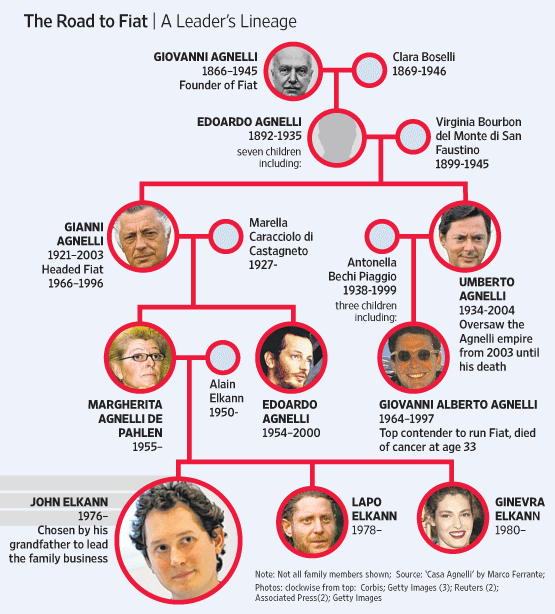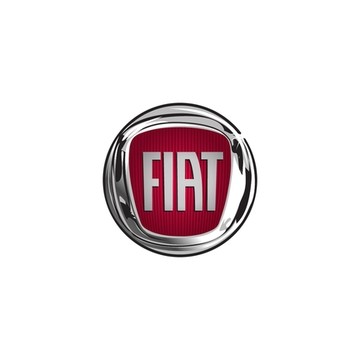About the billionaire Agnelli family, described as Italy's "de facto royal family" and the founder of the Fiat empire
The Agnelli Family played a huge role in the development of Italy in the 20th century. Their sphere of influence was not limited to industry. The 'Uncrowned Kingdom of Italy' had built another national brand, Juventus, alongside FIAT.

The FIAT (Fabbrica Italiana Automobili Torino) brand, which was founded by Giovanni Agnelli in 1899 in the city of Turin, located in the north of Italy, attracted attention with the slogan "A car for everyone". FIAT, which established a factory in the United States in 1909, produced the engines of pickup trucks, tractors, trains, ships and aircraft.
FIAT, which includes brands such as Lancia, Alfa Romeo, Maserati, Ferrari, Chrysler, Dodge, Jeep, Yamaha and Iveco, is among the largest automobile groups in the world.
Here is the history of FIAT
It all started in 1899, when the industrial revolution was born in Italy. The agreement establishing the Società Anonima Fabbrica Italiana Automobili Torino, also known as FIAT, was signed on 11 July 1899. Giovanni Agnelli, who was on the board of directors, soon stood out from the other members of the board of directors and stood out as the genius who brought FIAT to the position it is today. Giovanni Agnelli's confidence in FIAT's potential met with the strategy he developed for the company's success, and soon after, Agnelli took over Fiat in 1902.
In 1900, with the opening of the first factory in Turin, located in Northern Italy and considered one of the cultural and commercial centers of Italy, the production of the first FIAT car started. 150 people were working in the first factory opened. In the year it opened, only 24 vehicles passed through the production line. Among these 24 cars was FIAT's first car model, the 3 ½ CV. Vincenzo Lancia, who used FIAT's 24 hp model developed within 2 years of production, won the Sassi-Superga race held in 1902. The event that brought Fiat to the fore was again in 1902. Giovanni Agnelli, the manager of Fiat, who got behind the wheel of a Fiat car with 8 horsepower, not only completed the second Italian Car Tour, but also managed to break the time record in the race.
In 1908, Fiat Automobile Company (Fiat Automobile Company) was opened in America and Fiat made a rapid entry into the American market. Fiat, which gained great popularity when it was opened, was very popular with car lovers. After the changes made to the production line, Fiat started to equip its cars with electric accumulators. In the same period, FIAT patented the cardan gearbox.
Giacomo Malle Truco Period: 1912 – 1925
After Giovanni Agnelli, Giacomo Malle Truco became the head of FIAT and a brand new era started in FIAT. In 1916, the Lingotto factory, which was the largest factory of the period, was built and in 1922, the huge factory was inaugurated. This factory has become one of the symbols of the Italian automobile industry.
Throughout the First World War, FIAT devoted itself to the Allied Forces. After the end of World War I, Fiat started to explore new sectors. Fiat, which started to gain a place in electricity, public transportation lines, railways and iron industry, moved its production center to Russia after America and Fiat Lubrificanti was established in the same period.
Mussolini's Italy and Fiat: 1926 – 1938
When Mussolini came to power in Italy, Fiat had to shelve its international presence projects for a while. Instead, Fiat focused on producing the parts and equipment needed in the national market. Having managed to adapt to the situation in a short time, Fiat not only introduced new designs and new technologies in automobiles, but also brought great innovations in trucks, railways and aviation.
Two new Fiat models were introduced in 1934 and 1936: The Topolino, which was produced until 1955 and was considered the smallest car in the world at that time, and the Balilla, which led its era with fuel economy.
World War II and beyond: 1939 – 1964
With the start of World War II, car production in Fiat factories came to a near standstill, and Fiat focused on the production of military cars, aircraft, weapons and equipment for the army. Following the end of the war in 1945, Vittorio Valletta became head of Fiat.
The company, whose factories were destroyed in World War II, entered a period of renewal and construction began in 1948. Dedicating itself to innovation and growth after the war, Fiat generated more revenue and growth than ever before.
During this period, Fiat introduced two new models: 500 and 1400. During the production of these cars, heating and cooling systems were included in the plan of the cars for the first time. In the same period, Fiat broke a new ground for Italy and started the production of the first jet plane, the G830. Fiat, which led the post-war growth period, managed to make a name for itself in almost every sector.
Fiat 600, which followed the 500 model and attracted a lot of attention with its engine design placed at the back of the car, was introduced in 1955. Subsequently, Fiat's largest models such as the 1300, 1500 and 1800 were launched.
Industry Leader: 1965 – 1977
By the mid-1960s, 28 out of every 96 drivers were driving a Fiat car. In 1966, Gianni Agnelli, grandson of Fiat's founder Giovanni Agnelli, took over Fiat, which continued to open factories in the south of Italy. Like his grandfather, he reflected Fiat's passion for innovation and development into the company's management strategy. Under the direction of the second generation Agnelli, the 850 model was launched. Fiat's first front-wheel drive car, the 127, followed, and in 1971 the Fiat 127 was named car of the year.
Fully Automated Factories: 1978 – 1990
The automatic factory project, which the Fiat team had dreamed of for a long time, came to life in 1978 and the robotic system they named Robogate began to be used in Fiat factories. Fiat, which has now become one of the leading companies in Italy; It began to add other brands such as Lancia, Ferrari, Alfa Romeo and Maserati. During this period, Fiat Tipo, which won the title of Car of the Year in 1989, when it was launched with Fiat Panda and its technological innovations, went on sale.
Fiat in the New Century. 1991 – 2003
In the 1990s, Fiat launched several successful models, one after the other: Fiat Tempra, Fiat Punto, Fiat Coupé, Fiat Ulysse, Fiat Bravo and Fiat Barchetta. Among these vehicles, Fiat Punto won the Car of the Year Award in 1995 and Fiat Bravo in 1996.

